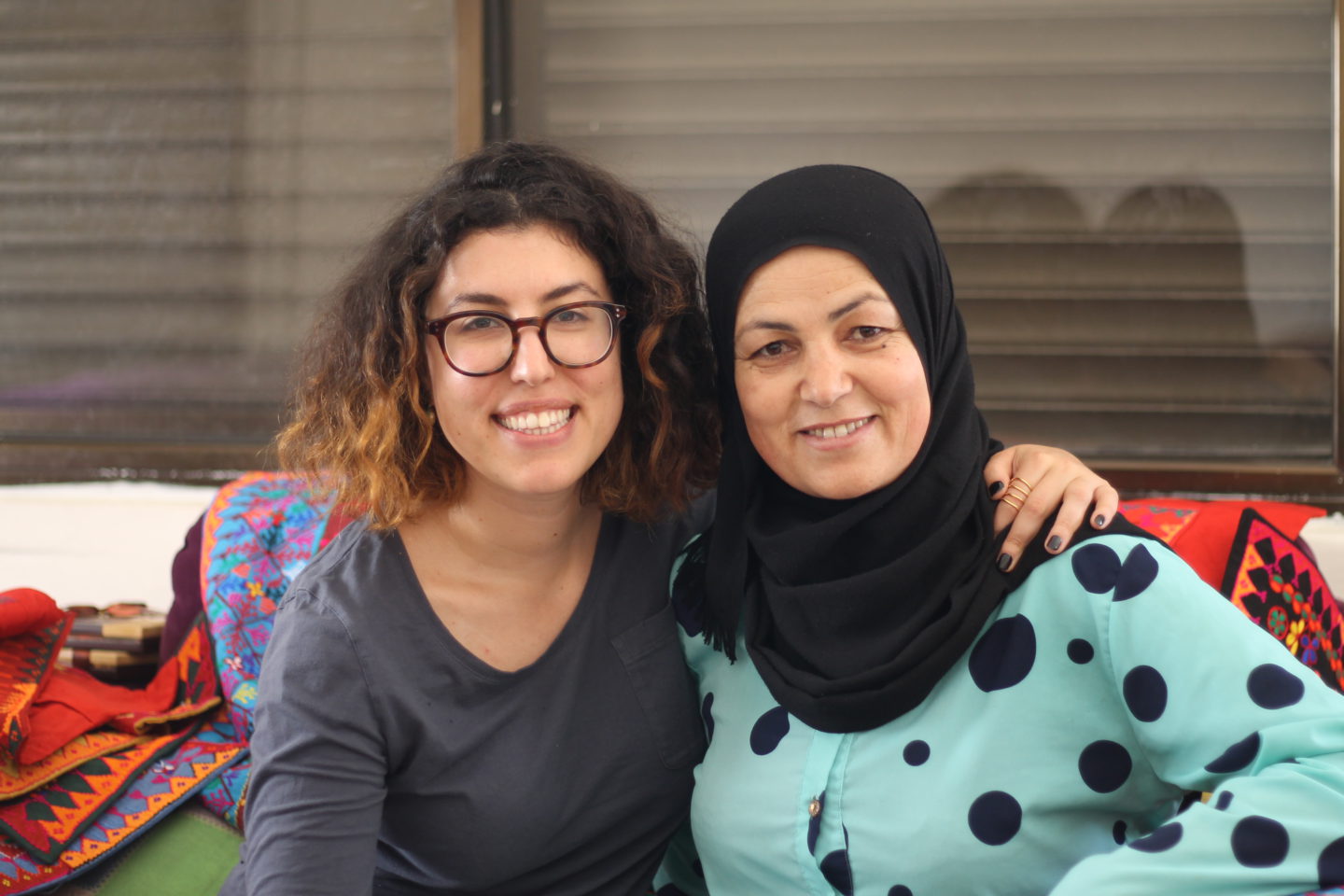Heritage preservation through fashion:
Fashion presented the perfect medium for Taita Leila to re-envision heritage. “What I saw about Palestinian embroidery was always well-documented references and museum pieces,” Husseini explains. “It was always out of touch, or do not touch. I wanted to bring it into people’s lives and have it be something that was worn and seen.”
Husseini set off by scouring the country for nine months to find the best embroiderers for the project. Together, they created Taita Leila’s first clothing line, using her grandmother’s book as a reference, and gathering suggestions on how to update traditional designs.
What resulted was Taita Leila’s first collection, Qabbeh, named after the central decorative chest panel on the thoub. The collection draws inspiration not only from one part of Palestine, but the country as a whole, creating an atlas of re-envisioned heritage. The Ramallah top from the Qabbah, for example, features red stitching with Hellenic influences, emblematic of the Greek Orthodox population that settled in the region. Taita Leila’s second collection, Benayiq, does the same. Named after the side panels at the bottom of a thoub, the rich azure blue of the Khalil Midi Skirt is inspired by Hebron’s famous craft scene, evident in the curves of the skirt that emulate the city’s blown glass vases.
“The language was unique to the woman,” says Husseini, referring to the fashion statement made by traditional embroidery. “It was all about her and what she was wearing. It was a little element of her taste, and about whether she wanted to stay traditional or look a little unique. The dress says something about the woman.”
Tala Sandouka shares Husseini’s thought. Sandouka is a textile restorer and tour guide at the Dar Al-Tifel Museum in Jerusalem. She assisted Husseini in researching for her second collection, Benayiq. “You’ll always have a novel to read through Palestinian dress,” Sandouka adds. “From my point of view, Taita Leila has a new perspective. They are bringing Palestinian embroidery to light not only for the new generation in Palestine, but also worldwide to the new generation of Palestinian immigrants.”
While in part about creating modern and stylish clothing that tells a story, another goal of Husseini’s is cultural reappropriation — exploring Palestinian heritage not in another part of the world, but in the country where it was born.












